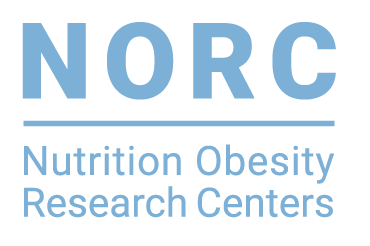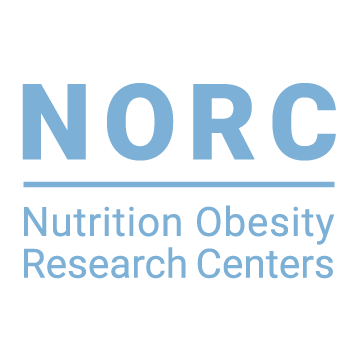Category: Publications
Null Mutation in Hormone-Sensitive Lipase Gene and Risk of Type 2 Diabetes
Abstract Lipolysis regulates energy homeostasis through the hydrolysis of intracellular triglycerides and the release of fatty acids for use as energy substrates or lipid mediators in cellular processes. Genes encoding proteins that regulate energy homeostasis through lipolysis are thus likely to play an important role in determining susceptibility to metabolic disorders. To identify genetic regulators of lipolysis, we sequenced 12 lipolytic-pathway genes in Amish subjects with extreme high or low fasting serum triglyceride levels were at the extremes of the distribution and identified a novel 19-bp frameshift deletion in exon 9 of LIPE, encoding hormone-sensitive lipase (HSL), a key enzyme … Read More »
Categories: Publications Tags: Mid-Atlantic MarylandNicotinamide N-Methyltransferase Knockdown Protects Against Diet-Induced Obesity
Abstract In obesity and type 2 diabetes, Glut4 glucose transporter expression is decreased selectively in adipocytes. Adipose-specific knockout or overexpression of Glut4 alters systemic insulin sensitivity. Here we show, using DNA array analyses, that nicotinamide N-methyltransferase (Nnmt) is the most strongly reciprocally regulated gene when comparing gene expression in white adipose tissue (WAT) from adipose-specific Glut4-knockout or adipose-specific Glut4-overexpressing mice with their respective controls. Thus, NNMT is a novel regulator of histone methylation, polyamine flux and NAD(+)-dependent SIRT1 signalling, and is a unique and attractive target for treating obesity and type 2 diabetes. Citation Kraus D, Yang Q, Kong D, … Read More »
Categories: Publications Tags: BostonPleiotropic Effects of Cavin-1 Deficiency on Lipid Metabolism
Abstract Mice and humans lacking caveolae have numerous pathologies including markedly aberrant fuel metabolism, lipodystrophy, and muscular dystrophy. Characterization of the physiologic/metabolic profile of cavin-1 knock-out mice suggests that dysfunction in fat, muscle, and liver metabolism in cavin-1-null mice causes a pleiotropic phenotype, one apparently identical to that of humans lacking caveolae in all tissues. Citation: Ding SY, Lee MJ, Summer R, Liu L, Fried SK, Pilch PF. Pleiotropic effects of cavin-1 deficiency on lipid metabolism. J Biol Chem. 2014 Mar 21;289(12):8473-83. PMID: 24509860; PMCID: PMC3961672. Read More: Journal of Biological Chemistry Research Details Research Center: Boston Center Contribution: This … Read More »
Categories: Publications Tags: BostonCanonical Nlrp3 Inflammasome Links Systemic Low-Grade Inflammation to Functional Decline in Aging
Abstract This paper queries the causal links between systemic inflammation and aging, and details a mechanism by which the Nlrp3 inflammasome controls systemic low-grade age-related “sterile” inflammation. Ablation of Nlrp3 inflammasome protected mice from age-related increases in the innate immune activation, alterations in CNS transcriptome, astrogliosis, and improved glycemic control, and attenuated both bone loss and thymic demise. Citation Youm YH, Grant RW, McCabe LR, Albarado DC, Nguyen KY, Ravussin A, Pistell P, Newman S, Carter R, Laque A, Münzberg H, Rosen CJ, Ingram DK, Salbaum JM, Dixit VD. Canonical Nlrp3 inflammasome links systemic low-grade inflammation to functional decline in … Read More »
Categories: Publications Tags: Pennington Biomedical Research CenterEffect of Roux-en-Y Gastric Bypass and Laparoscopic Adjustable Gastric Banding on Branched-Chain Amino Acid Metabolism
Abstract It has been hypothesized that a greater decline in circulating branched-chain amino acids (BCAAs) after weight loss induced by Roux-en-Y gastric bypass (RYGB) surgery than after calorie restriction alone has independent effects on glucose homeostasis, possibly by decreased signaling through the mammalian target of rapamycin (mTOR). We evaluated plasma BCAAs and their C3 and C5 acylcarnitine metabolites, muscle mTOR phosphorylation, and insulin sensitivity (insulin-stimulated glucose Rd) in obese subjects before and after ~20% weight loss induced by RYGB (n = 10, BMI 45.6 ± 6.7 kg/m(2)) or laparoscopic adjustable gastric banding (LAGB) (n = 10, BMI 46.5 ± 8.8 … Read More »
Categories: Publications Tags: Washington University St. LouisIntrahepatic Diacylglycerol Content is Directly Associated with Hepatic Insulin Resistance in Obese Subjects
Abstract Data from studies in animal models indicate that certain lipid metabolites, particularly diacylglycerol, ceramide, and acylcarnitine, disrupt insulin action. We evaluated the relationship between the presence of these metabolites in the liver (assessed by mass spectrometry) and hepatic insulin sensitivity (assessed using a hyperinsulinemic-euglycemic clamp with stable isotope tracer infusion) in 16 obese adults (body mass index, 48 ± 9 kg/m²). There was a negative correlation between insulin-mediated suppression of hepatic glucose production and intrahepatic diacylglycerol (r = -0.609; P = .012), but not with intrahepatic ceramide or acylcarnitine. These data indicate that intrahepatic diacylglycerol is an important mediator … Read More »
Categories: Publications Tags: Washington University St. LouisCholine in Pregnancy – Video Abstract with Dr. Steven Zeisel
This is a video abstract of the expert opinion paper “Nutrition in pregnancy: the argument for including a source of choline” published in the open access International Journal of Women’s Health by Dr. Steven H. Zeisel, co-director of the UNC Nutrition Obesity Research Center. Abstract: Women, during pregnancy and lactation, should eat foods that contain adequate amounts of choline. A mother delivers large amounts of choline across the placenta to the fetus, and after birth she delivers large amounts of choline in milk to the infant; this greatly increases the demand on the choline stores of the mother. Read the … Read More »
Categories: Publications, Videos Tags: University of North Carolina at Chapel HillEffect of An Environmental School-Based Obesity Prevention Program on Changes in Body Fat and Body Weight
Abstract This study tested the efficacy of two school-based programs for prevention of body weight/fat gain in comparison to a control group, in all participants and in overweight children. The Louisiana (LA) Health study utilized a longitudinal, cluster randomized three-arm controlled design, with 28 months of follow-up. Children (N = 2,060; mean age = 10.5 years, SD = 1.2) from rural communities in grades 4-6 participated in the study. Seventeen school clusters (mean = 123 children/cluster) were randomly assigned to one of three prevention arms: (i) primary prevention (PP), an environmental modification (EM) program, (ii) primary + secondary prevention (PP+SP), … Read More »
Categories: Publications Tags: Pennington Biomedical Research CenterMuscle-Specific Deletion of Carnitine Acetyltransferase Compromises Glucose Tolerance and Metabolic Flexibility
Abstract The concept of “metabolic inflexibility” was first introduced to describe the failure of insulin-resistant human subjects to appropriately adjust mitochondrial fuel selection in response to nutritional cues. This phenomenon has since gained increasing recognition as a key component of the metabolic syndrome, but the underlying mechanisms have remained elusive. This study identifies an essential role for the mitochondrial matrix enzyme, carnitine acetyltransferase (CrAT), in regulating substrate switching and glucose tolerance. Key Findings Comprehensive metabolic profiling links CrAT to whole body glucose homeostasis Muscle-specific ablation of CrAT disrupts systemic glucose tolerance in mice CrAT deficiency disrupts nutrient control of PDH … Read More »
Categories: Publications Tags: Pennington Biomedical Research CenterThe NLRP3 Inflammasome Instigates Obesity-Induced Inflammation and Insulin Resistance
Abstract This publication demonstrates that the Nlrp3 inflammasome senses obesity–associated ‘danger–signals’ and contributes to obesity–induced inflammation and insulin resistance. Citation Vandanmagsar B, Youm YH, Ravussin A, Galgani JE, Stadler K, Mynatt RL, Ravussin E, Stephens JM, Dixit VD. The NLRP3 inflammasome instigates obesity-induced inflammation and insulin resistance. Nature Medicine 17:179-88. PMID: 21217695. PMCID: PMC3076025. Read More: Nature Medicine Research Details Research Center: Pennington Biomedical Research Center Related Research Grants: R01 DK090556, R01 AG31797, R00 DK083615, P20 RR021945 Center Contribution: The flow cytometry to analyze adipose tissue macrophages, resident effector T cells and regulatory T cells, documentation by microscopy, evaluation of … Read More »
Categories: Publications Tags: Pennington Biomedical Research Center
